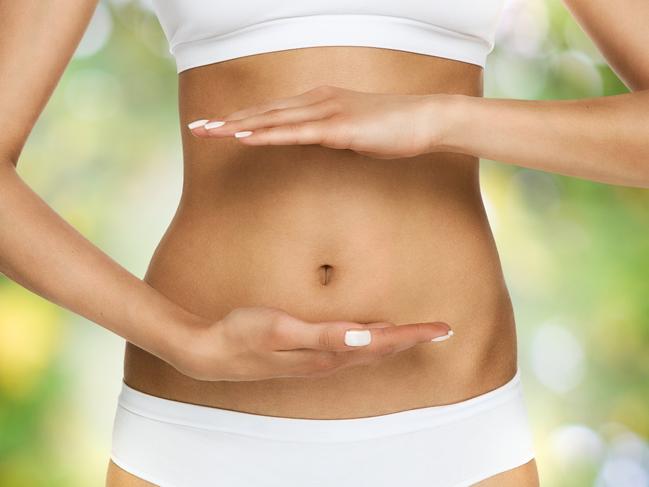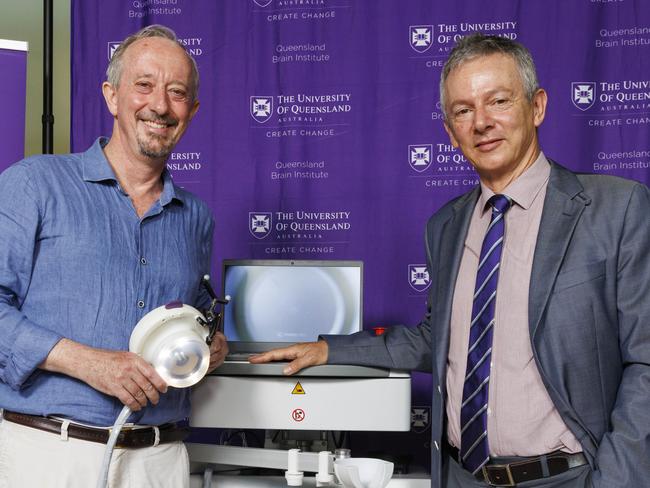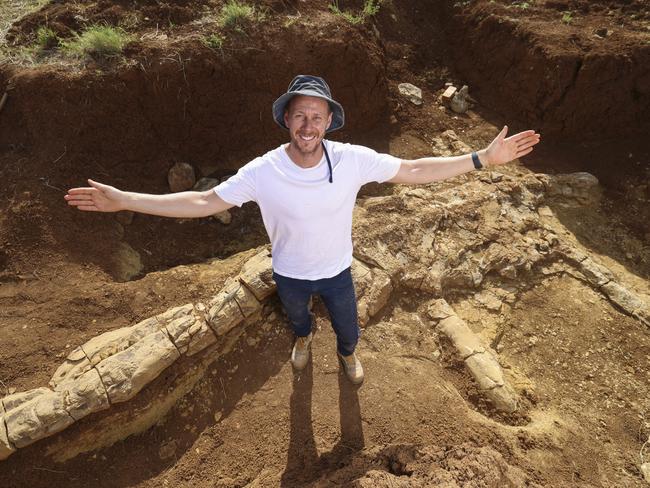
Breakthrough on tests for heart disease, diabetes
Collaboration develops simple test that can be used at home by patients or in remote areas to test for a range of cardiovascular conditions.

Collaboration develops simple test that can be used at home by patients or in remote areas to test for a range of cardiovascular conditions.

Want to make an impression the next time you’re trying to skim a stone off water? Ignore the usual thin, flat candidates and try a fatter, curvier rock to get the biggest possible bounce.

Former Australian of the Year and stem-cell research pioneer Professor Alan Mackay-Sim has died, aged 71.

From international travel to home drone deliveries, air traffic control is undergoing a revolution.

Fish that have lost food because of mass coral bleaching are getting into more unnecessary fights, causing them to expend precious energy and potentially threatening their survival, a study shows.

Sending in decoy troops to distract enemy forces can allow the real agents to carry out their mission undetected. It is a tactic designed not just for war, but to boost the success rate for transplants.

Staying hydrated can keep you healthy well into old age and reduce the chances of dying early, a study suggests.

Groundbreaking research has found that combining time-restricted eating with HIIT workouts can have dramatic results.

Tempting as it may be to down pills and powders to promote gut health, for most of us, sticking to a balanced diet will work best.

Yes, there is fat content in nuts. The question is, are we absorbing enough of it to be harmful or cause weight gain?

Australia has launched its most ambitious polar exploration project in decades: a 1200km ice traverse into Antarctica’s frigid interior.

We need to embrace AI as a technology, but we also need now to have a conversation about how to manage it and not have a HAL incident.

Artificial intelligence technology has helped to triple the number of stroke victims who recover to a point where they can perform daily activities, according to new research.

Scientists uncover glass frogs’ unique vanishing act – becoming see-through by hiding their blood – opening new avenues for blood clot research and medicines.

Haywire immune response in the olfactory system found to explain why some people can’t smell long after Covid symptoms abate.

Dolphins may become stranded in shallow waters because they follow leaders with a condition similar to Alzheimer’s disease, a study suggests.

Children’s hospitals in Australia are seeing an increase in cases of the bacterial infection invasive group A streptococcus but infectious diseases doctors say there is no cause for alarm.

Natural resources at the bottom of the deepest oceans are now within Beijing’s grasp with construction of one of the world’s most advanced ships.

Scientists say vast numbers have been enticed by a lack of predators and a thawing permafrost that means more vegetation.

Many men with prostate cancer may soon be able to receive targeted treatment far more effective than chemotherapy or radiation.

NASA TV images showed white particles resembling snowflakes streaming out of the rear of the vessel for hours on Thursday.

A drug pioneered by Australian scientists for the most common form of leukaemia has passed phase 3 trials, paving the way for it to be adopted globally.

US researchers replicated the process that powers the sun to create for the first time a net energy gain.

Lingering symptoms after a respiratory infection are common. Most cases are too mild to worry about. Calling these cases long Covid is the medicalisation of ordinary life.

A personalised vaccine trialled on humans has slashed the risk of secondary cancers after melanoma treatment, in what has been hailed as a significant medical breakthrough.

Animal studies show blasts of ultrasound can restore cognitive function and boost the effect of drugs, University of Queensland researchers say.

The quest by evolutionary biologist Toby Kiers to stick her nose in the earth has taken her to the world’s remotest island.

They’re calling it the Rosetta stone of Australian palaeontology in outback Queensland – the first intact fossilised skeleton of a 100-million-year-plus elasmosaur to be unearthed.

The Orion spaceship has made a close pass of the moon and used gravity to help whip itself back towards Earth.

Queensland will be transformed into an mRNA scientific powerhouse following a multimillion-dollar investment, which will enable scientists to begin work on a world-first vaccine for chlamydia and other diseases.
Original URL: https://www.theaustralian.com.au/science/page/22